Categories: Electric installation work
Number of views: 9743
Comments on the article: 0
How to make an electric heated floor with your own hands
Underfloor heating is used as an addition to the heating system, for heating local areas of the floor, for example in the bathroom, or on the balcony. As well as the main type of heating, this method of use is less common. There are several types of implementation of this system, each has its own advantages and disadvantages. In this article we will look at how to make an electric heated floor with our own hands, and also consider the differences in the types of heating.
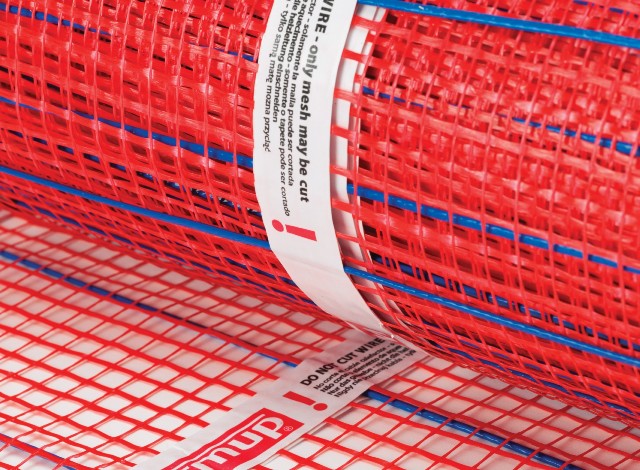
Types of electric underfloor heating
As already mentioned, they distinguish between different types of underfloor heating systems. First of all, there are two main areas - water and electric. What are the advantages of an electric underfloor heating over water?
Electric underfloor heating:
-
unlike water, it will not freeze under any circumstances;
-
the water heated floor pipeline may be damaged (for example, during freezing), flood the neighbors from below, ruin the repair of apartments;
-
since a cable or film is used, the thickness of the entire system decreases, from 10-20 mm to 4-7 mm. Accordingly, the floor level will change to a lower height;
-
Electric underfloor heating practically does not require maintenance, except for checking the RCD and the status of contacts.
According to the heating elements are divided into:
1. Heating cable. It is resistive one- and two-core and self-regulating. Resistive cables require an additional thermoregulator, and for self-regulating, you can do without it.
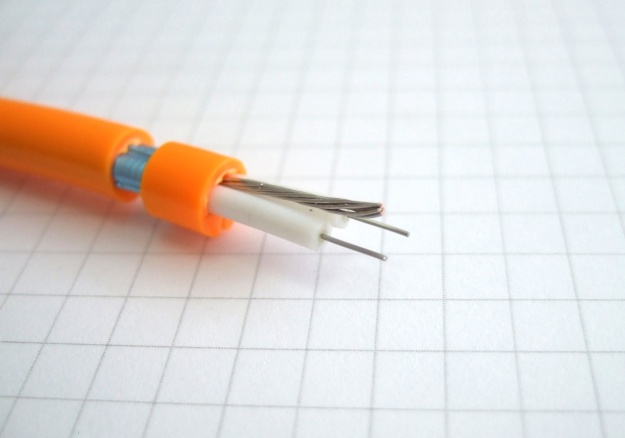
2. Heating mats. In principle, this is the same heating cable, but fixed to a fiberglass mesh or film, which makes installation quicker and easier. It just needs to be rolled out on a heated surface. And cable systems need to be additionally fixed on the floor, we will consider this later.
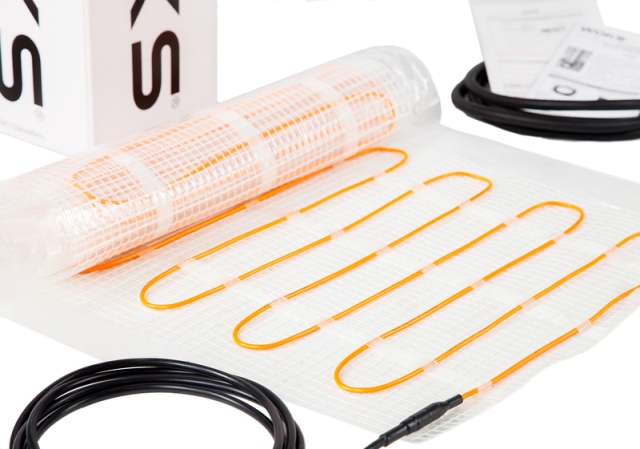
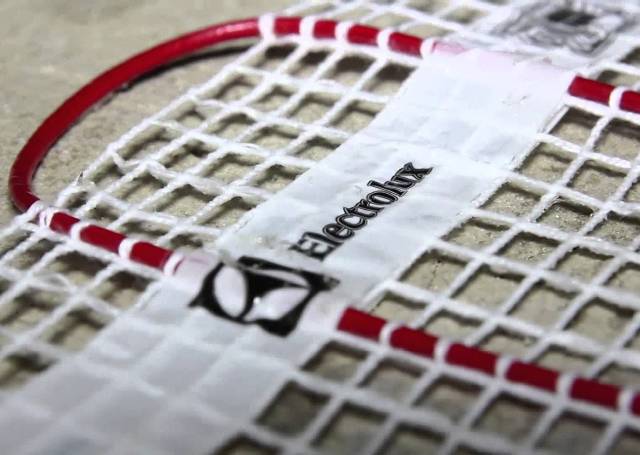
3. Film underfloor heating. This view is a flexible canvas on which conductive carbon lines are applied, they represent a heater. Film heaters are also called infrared. An interesting feature of such a system is that it can be laid directly under a laminate, parquet, carpet or linoleum. Usually the width of the canvas is 0.4-1 m.

4. The core. It resembles the two previous types, but it uses carbon rods connected in parallel on a conductive bus as a heater.

Where is the warm floor installed?
Most often it is installed in the kitchen and in the bathroom. The reason for this is the high humidity in these rooms, in addition, with high humidity, the cold is felt more strongly. When you leave the bath, it becomes much more pleasant to become on the warm floor than on a cold tile. And in the bathrooms of most apartments there are no heating radiators. Therefore, installing a warm floor will increase the overall temperature in the apartment. Often installed near pools, in baths, toilets.
They are less often installed on balconies and loggias if you use them as a functional space of a room. In living rooms, it also makes sense to install, especially in apartments located on the ground floor or private houses, when it draws cold from the floor.
Installation Benefits:
-
the temperature rises in the whole room and you can be in it without shoes;
-
humidity decreases;
-
the likelihood of mold is reduced.
Construction: do-it-yourself electric floor heating
To provide the floors with the right amount of heat, you need to choose the appropriate power. It depends on many factors: surface temperature, thermal insulation, and more. Approximate power values per square meter:
-
bedroom - 100-150 W / sq.m;
-
entrance hall, corridor, kitchen - 150 W / sq.m;
-
toilet, bathroom - 180 W / sq.m;
-
balcony, loggia - 200W / sq.m.
The general scheme is shown in the figure below.
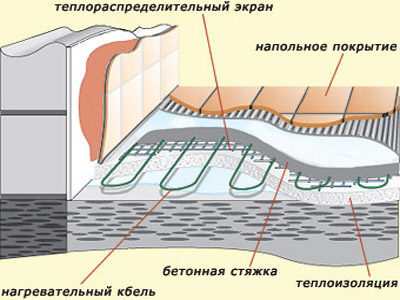
Laying the heating cable
The main task when laying is to lay it so that the heat is distributed evenly. Therefore, it is laid either with a snake or a spiral converging to the center of the room.
Ways of laying a heating cable
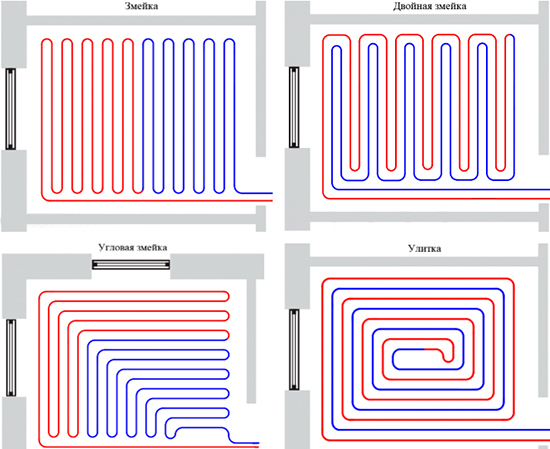
It is not necessary to lay heating elements under the furniture, experts identify two reasons: it can overheat and fail, and it makes no sense to heat this space. First of all, you need that warm surface on which you walk.
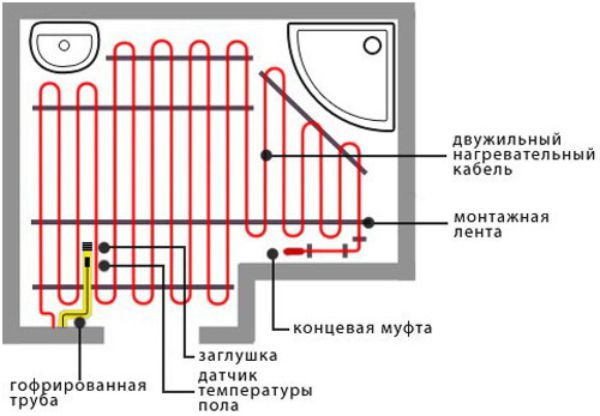
In order for the cable to be laid firmly, it must be fixed to the surface. There are two options for how this can be done:
1. Fix to the floor on metal mounting tapes or plastic strips with locks.
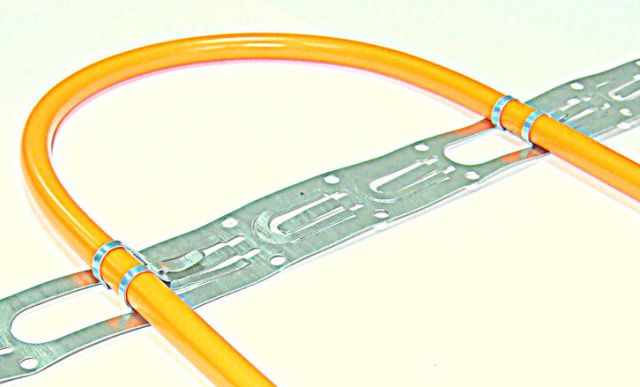
2. Lay the net to which the cable is secured with plastic clamps.
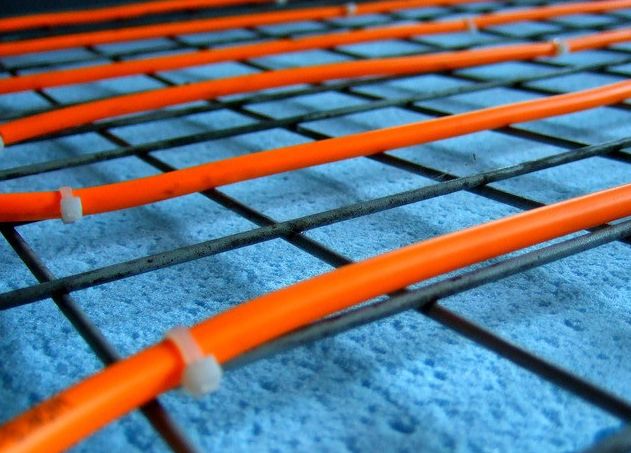
In order for the heat to be distributed evenly, the cable is laid in concrete at various depths:
-
from 1 cm, with a step of laying more than 7.5 cm;
-
from 2 cm, with a step of laying from 7.5 cm to 10 cm;
-
from 3 cm, with a step of 10 cm to 12.5 cm;
-
from 4 cm, with more than 12.5 cm.
The next problem to solve is how to lay the cable. It depends on the flooring. In general, the order is as follows:
1. A reinforced cement-sand screed with a thickness of 3 cm is laid. A damper tape is laid to compensate for the thermal expansion of the screed. If the floor is concrete, you can skip this step.
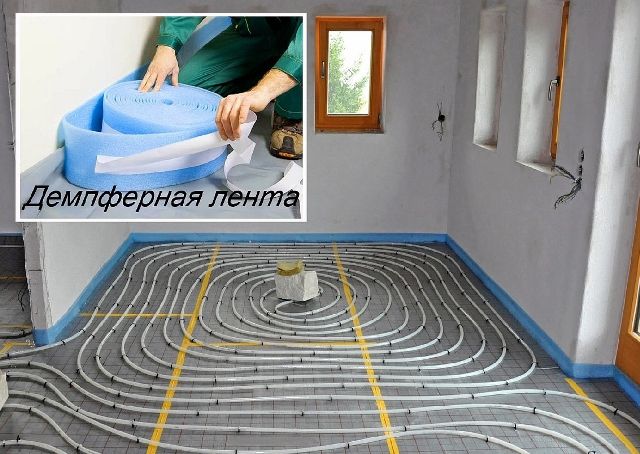
2. Installation of thermal insulation. It is needed in order to reduce heat loss down. For these purposes, you can use plates made of expanded polystyrene foam, materials from basalt fiber and so on. The foil-based thermal insulation must be laid so that the metallized layer faces the heat source. This reflects heat better.

The stronger the floor freezes, the thicker the thermal insulation layer should be, up to and more than 5 centimeters. There are special substrates on which it is convenient to mount the cable. The joints of the substrate are glued with aluminum tape or other adhesive tape.
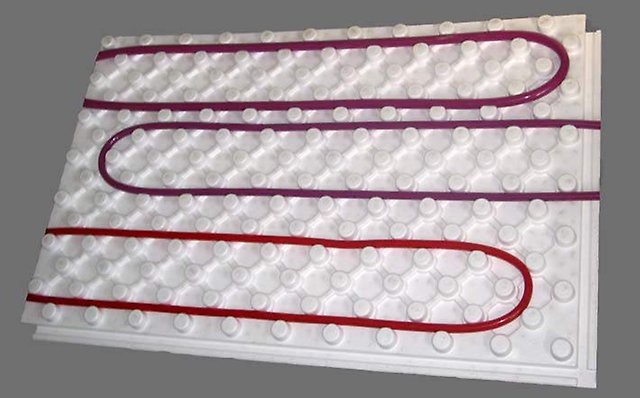
3. The cable and temperature sensor from the thermostat are laid.
4. A reinforcing net and a finishing screed are placed on top of it.

Cable laying is carried out after the screed is completely dried, it depends on the environmental conditions and the composition of the solution, it can be delayed for a long period, up to a month.
If the tile will lie on the floor, then another cement screed with a reinforcing mesh over the heating elements is laid.
Heating mats and film floor
The laying process of these types of heaters differs only in that they need to be rolled on the floor, like wallpaper. Film underfloor heating can be laid directly under the floor covering without a finish screed, for example under linoleum or parquet, due to its small thickness (up to 1 mm). This allows you to make a warm floor in a short time and at minimal cost.
Be sure to lay on top of the film heat dissipating coating, it provides additional protection against damage. The overlap of the bands is unacceptable.
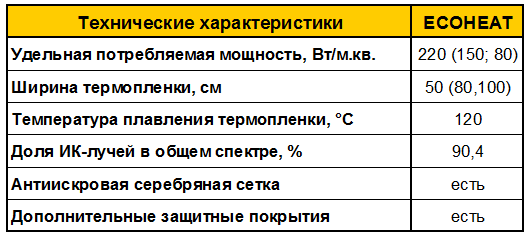
If there is a need to change the length of the strip, then they can be cut along the notch line.
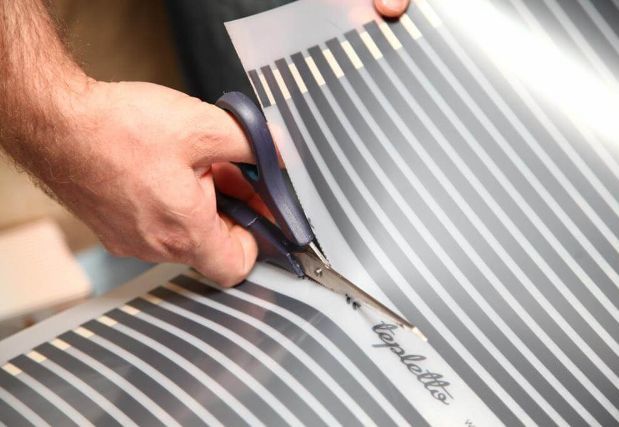
Current-carrying buses are located on the film, wires to them are mounted using clamps. All electrical connections are insulated.


The temperature sensor is mounted on top of the film.
Wiring diagram
As already noted, the heating elements are connected to the thermostat, and the temperature sensor is also installed above or below them, so that it is evenly removed from the cable turns, if heating cables or mats are used, this is necessary to ensure the accuracy of the readings. This may require shredding the wall or grooves along the screed. A typical connection diagram is shown below.
Wires to the heating elements are best laid in the corrugation. If possible, it is necessary to connect a heating system to ground.
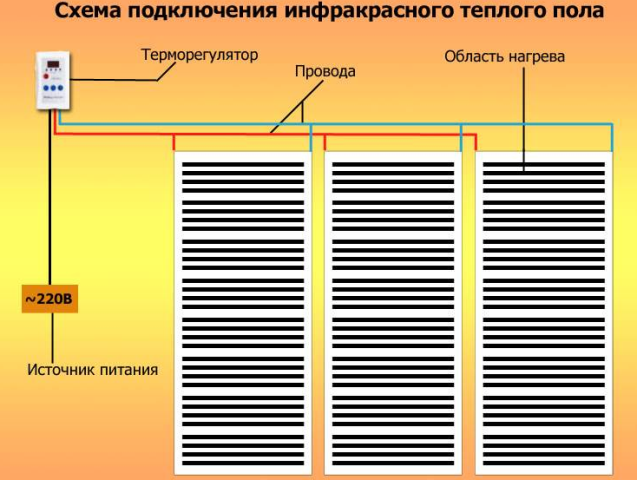
Typical IR film connection
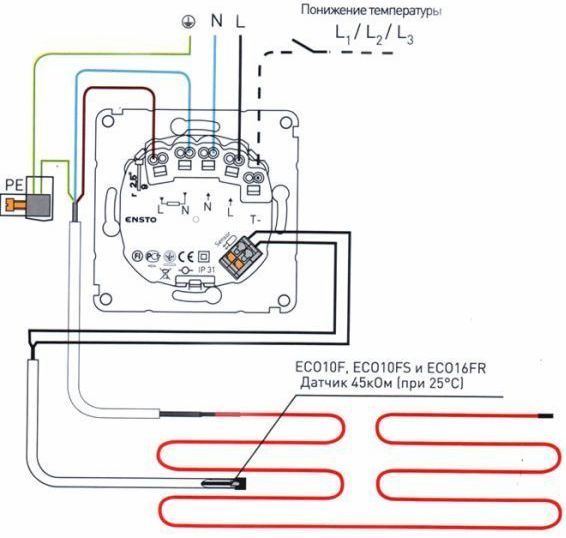
For cable
Conclusion
Installation of underfloor heating is a simple task, but quite laborious, you need to go through all the stages of floor construction. Including pouring screeds, laying thermal insulation, heating elements, connecting wiring. However, this will ensure a comfortable stay in the room at any time of the year or weather.
See also at bgv.electricianexp.com
:
